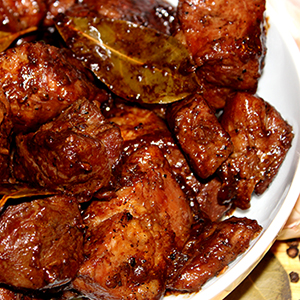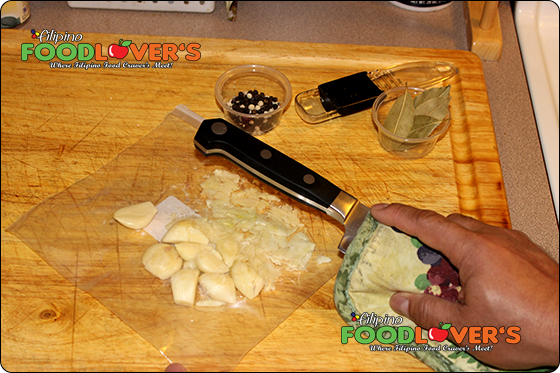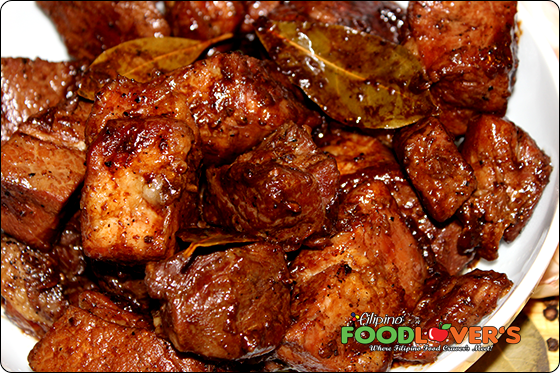
Philippines is an archipelago of over 7,200 islands and abundant with culinary ingredients from spices to pork, beef, lamb/goat, seafood, and vegetables. Also, back in the day, Philippines encountered numerous visitors and aggressors from whom Filipinos inherited a great number of cooking techniques and methods. The one that had the most influence was the Spaniards due to their over four centuries presence in the Philippines.
This is also the very reason why Philippines cuisine is heavily influenced and dominated with Hispanic dishes despite being an Asian country. Also, many of the dishes are indigenous but given Spanish names since Spaniards had trouble remembering or pronouncing the names they already had. This made it easier for them and later on Filipino’s adopted and embraced those names too.
While many dishes were lost in the history, a lot of them survived and one particular dish not only survived, but held a top ranked position all the way into the modern world. During earlier days indigenous Filipino’s had to come up with some way of preserving their food while satisfying their taste palate, so they came up with this dish that would last a few days without going bad despite the absence of refrigeration or chemical preservatives.
Natives cooked this dish with soy sauce, vinegar, and some spices, with the vinegar acting as a natural preservative since bacteria does not mix well or grow when vinegar is present. (at least not right away) Due to the popularity of this dish, the Spaniards quickly discovered it and liked it themselves calling it Adobo. Oddly enough, Adobo means, “dressing” in Spanish so why they choose that name is somewhat unclear.
Adobo in modern Filipino terms does not necessarily mean it’s the name of the dish because it is also a “method of cooking” since just about anything can be made with Adobo, from meat, poultry, fish, or vegetables.
Due to Adobo’s popularity and easiness to cook, it is now unofficially recognized by the Filipinos as the nation’s national dish. Although some do not agree with this, in my humble opinion, it truly deserves that spot since it is easy to cook and can be very affordable even for people who are less fortunate.
The proposed dish to replace Adobo by Senator Nancy Binay in 2014 is “Litson or Lechon” (whole roast pig in a pit). Although this dish represents a traditional Filipino gathering, it is not as easy to make as Adobo, not to mention it’s very expensive and take several hours to cook. That’s the reason why I say Adobo deserves to remain the national dish of the Philippines.
Indigenous Filipinos nailed this method of cooking right the first time since there really isn’t much you can do to make the dish better, but if you’re not careful it is very easy to mess up. The key to making Adobo is to “not” re-invent the wheel. There is room for being creative such as adding coconut milk, fresh chunks of pineapple, potatoes, hard-boiled chicken eggs, and even hot dogs.
Those I mentioned above certainly can be combined with traditional Adobo, but what you cannot do is throw all of them in there at once because if you do your Adobo will quickly become inedible (not even for your neighbor’s dog).
So, with that being said I tend to follow the simple and safe version, not to mention this is how my mother taught me to cook this classic dinner table wonder. Since this version uses thicker and tougher cuts of meat, we will approach this Adobo braising style without marinating the meat.
My objective is to infuse as much flavor into the meat during the cooking process and to have fork tender meat when it’s done and ready to be served. So, rather than marinating the meat first, I decided to slowly cook it to have a similar final product.
So, without further ado let’s cook this dish…


- 2 Lbs Boneless pork shoulder roast
- 12 Cloves of garlic – smashed
- 4 Pcs Bay leaf (laurel leaves)
- 1 ½ Tsp Whole black peppercorns
- 1 Tsp Whole white peppercorns
- ½ Cup soy sauce
- ¼ Cup vinegar
- 1 Cup water
- 1 Tbs Corn oil
- Cut pork into 2” inch pieces and leave the fat intact, then set aside.
- Peel and smash garlic in a zip lock bag (see picture), then set aside.
- Place cooking pan and pour in cooking oil, making sure the bottom is totally coated. Then place all the meat into the pan.
- Season the meat with smashed garlic, crushed peppercorns, but only add half of it at this time and save the other half for later on.
- Add the soy sauce, vinegar, water, and bay leafs.
- Turn the heat on and quickly bring it to boil. Then lower the heat and let it cook on low heat for 1.5 hours checking on it in half hour increments.
- Check Adobo often while monitoring the amount of liquid and making sure it doesn’t dry out. You may add more water as necessary to complete the amount of time required for the meat to tenderize, however keep in mind that toward the end you want most of the liquid gone, so only add water a little bit at a time.
- When you reach halfway thru the cooking time, add the remaining crushed peppercorns, stir the Adobo carefully, and place the lid back on while it continues to cook.
- Your Adobo is done and ready to be served when you reach the 1 1/2 hour cooking time and liquid is mostly reduced and evaporated. Serve Adobo over white steamed rice and enjoy your meal!

2 lbs Boneless Pork Shoulder

2 lbs Boneless Pork Shoulder Cut Ups

1 1/2 Tsp. Black Peppercorns & 1/2 Tps. White Peppercorns

4 Bay Leafs / Laurel Leafs

Cloves of Garlic, Root End Removed, Crushed and Peeled

Smashed Garlic Inside Ziploc Bag to Avoid Making a Mess

Mixed All Ingredients in the Cooking Pan

Pork Adobo Ready to Serve Over White Steam Rice

Pork Adobo Ready to Serve Over White Steam Rice
 Posted in
Posted in  Tags:
Tags: 


nice ka!
thanks for the instructions:)
I love pork, and by the look of the pictures this recipe looks absolutely delicious, thank you for sharing this treasure!
Is there any substitute for pork shoulder? It seems like a leaner type of meat and that’s not my preference kasi 🙂